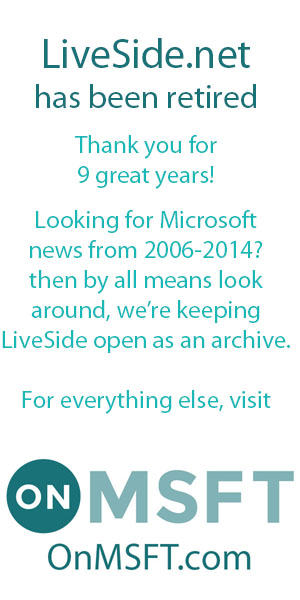 One of the questions our commenters asked about the upcoming integration of Windows Live Mesh into SkyDrive was “what about direct Device to Device synchronization?”. Currently, you can use Windows Live Mesh to sync folders from device to device, with the Live Mesh service only used as a type of middleman. But it looks like we’re not going to be getting a full integration of current Live Mesh functionality once it’s folded into SkyDrive.
One of the questions our commenters asked about the upcoming integration of Windows Live Mesh into SkyDrive was “what about direct Device to Device synchronization?”. Currently, you can use Windows Live Mesh to sync folders from device to device, with the Live Mesh service only used as a type of middleman. But it looks like we’re not going to be getting a full integration of current Live Mesh functionality once it’s folded into SkyDrive.
As another commenter, Stefan, noted, Mike Torres from SkyDrive clarified in the comments on the Windows 8 blog post that you won’t be able to set up device to device sync, only “device to SkyDrive”. Here’s the quote:
We won’t be offering a way to sync between PCs without using the cloud as we’ve found that it adds complexity. Both technical complexity as well as, more importantly, complexity in the overall user model. The SkyDrive model is really quite simple in that it’s “cloud-first” and not “cloud-optional” which means you no longer have to worry about the timing of various PCs being online to sync, or having files that are only available on PCs but not through SkyDrive.com or mobile devices. Conflicts are far less likely as well since the cloud is always "online". The fetch feature addresses the need to “get back” to stuff that you haven’t put in SkyDrive yet. There are tradeoffs either way, we realize that, but we decided to focus on a simple model and really work to get that right.
In fact, Omar Shahine, Mike Torres, and even Steven Sinofsky have been quite active in answering questions on the SkyDrive post. We went through and tried to pull out the answers that provide bits of new information, here’s a quick summary:
- The SkyDrive folder (single) is by default at %userprofile%SkyDrive #, but can be set to another location via the UI. You can add SkyDrive (sub)folders to new or existing libraries, and change the location of My Documents, etc., to be in the SkyDrive folder #.
- You can set the default save location for libraries to be SkyDrive #.
- No file type restrictions for files in the Metro Style or Windows Explorer apps. The current restrictions on file types via the API are still in place #.
- No specifics on content restrictions at this time, other than the Code of Conduct #.
- Remote Access/fetch is optional #.
In addition, Mike Torres also expounded a bit on the difference between how Microsoft sees SkyDrive and how it is different than a backup solution:
Mike Torres # @pmbAustin: Many people rely on sync or cloud storage services to provide backup. However, as you may know, backup has a different set of needs when compared with sync or cloud storage. For example, between the two of us we employ numerous onsite and offsite backup technologies like RAID-1, cloud backup solutions like Crashplan, offsite backups of the backups, and BitLocker to secure backed up data. If you only rely on cloud storage for your data the reality is that when you lose data, cloud storage often doesn’t provide “instant” or “easy” restore of the data. For example if you had 1 terabyte of cloud storage it would likely take about 2 weeks to “download” all that data all over again, assuming continuous 1MB download speed (1TB = 1,000,000MB = 278 hours at 1MB/sec). Of course, your data is “safe” in SkyDrive but it’s not the best option for true backup today. We’ve really focused on making SkyDrive a great place to store files you want to get to from many devices or share with other people. Sync provides benefits that when combined with cloud storage and local backup in Windows give you robust file availability, easy access and sharing.
Throughout the comments, Omar and Mike promise more to come in future blog posts about SkyDrive, can’t wait!

